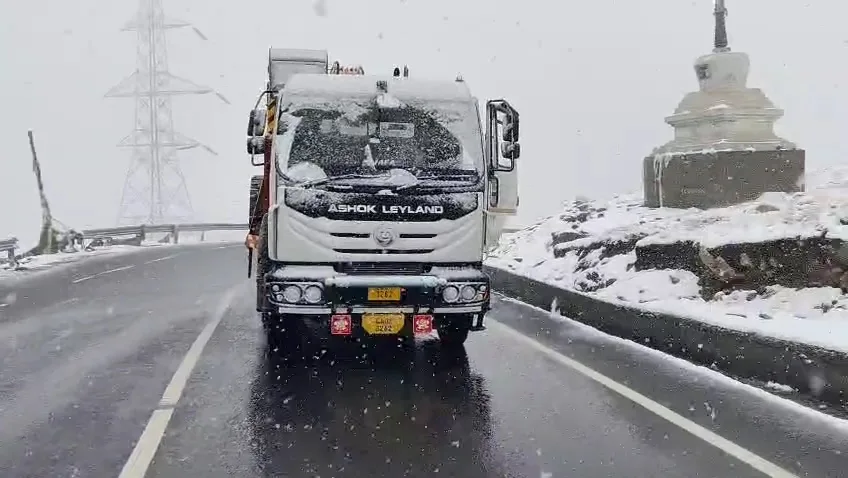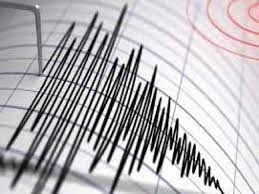When Summer Turned to Winter Overnight
By: Javid Amin | 28 Aug 2025
In a surprising twist of weather, Ladakh—known for its dry summers and late-autumn snow—woke up to a white blanket of snow in August 2025. What should have been peak tourist season suddenly transformed into a winter wonderland, disrupting travel but also leaving visitors in awe.
The snowfall, a full month ahead of schedule, has raised both excitement and concern. While locals marveled at the unusual timing, meteorologists warn that such climatic anomalies may be linked to larger patterns of global warming and climate unpredictability.
Where Snow Fell: Leh, Kargil, Drass & Iconic Passes
Several parts of Ladakh received unexpected snow showers:
-
Leh town woke up to snow-dusted rooftops and frozen winds.
-
Kargil and the Suru Valley saw a rare snowy twist to their summer festival.
-
Drass, one of the coldest inhabited places on Earth, recorded near-winter conditions.
-
Mountain passes including Khardung La, Chang La, Fotu La, and Pensi La were carpeted in fresh snow, forcing temporary closures.
For locals, August snowfall is nothing short of historic. For tourists, it was the kind of “once-in-a-lifetime experience” they hadn’t planned for.
Travel Disruptions: When Roads and Skies Shut Down
The snow brought beauty but also chaos:
-
Khardung La, one of the world’s highest motorable roads at 18,380 ft, was closed due to icy, slippery conditions. This cut off access to Nubra Valley, stranding vehicles and tourists.
-
The Srinagar–Leh Highway experienced delays and risk of avalanches near Zoji La.
-
At Leh Airport, multiple flights were cancelled or delayed. Even the Dalai Lama’s travel plans were affected, forcing his scheduled return to Dharamshala to be postponed.
For the tourism-dependent region, the disruptions hit hard—especially since August is peak season for trekkers, bikers, and festival-goers.
Rainfall Records Broken: Wettest August in 50 Years
While snow stole the headlines, the monsoon’s intensity also set records.
-
The Yourting observatory in Leh recorded 47 mm of rainfall on August 25—the highest for the month since 1973.
-
Usually, Ladakh remains a cold desert, receiving less than 100 mm of rain annually. Such heavy precipitation is unprecedented for this time of year.
Experts warn this combination of rain and snow is a direct outcome of rare weather systems colliding—a phenomenon that may become more frequent under changing climate conditions.
Festival Surprise: Suru Summer Festival Turns Snowy
In Kargil, the much-anticipated Suru Summer Festival, a showcase of Ladakhi culture, sports, and heritage, was dramatically transformed.
Union Minister Kiren Rijiju, attending the event, exclaimed:
“First time in my life I’ve seen so much snowfall in August!”
What was planned as a sunny cultural fair became a surreal scene of folk dances, horse riding, and traditional music against snowy backdrops. Tourists described it as both magical and chaotic—umbrellas gave way to snow shovels.
Meteorological Insight: Why Did It Snow in August?
Meteorologists point to a rare clash of weather systems:
-
Monsoon currents surged unusually northward into Ladakh.
-
A western disturbance, typically a winter system, passed across the region.
-
The collision of these two systems led to sharp temperature drops, causing rain to turn into snow.
According to climate experts, this event may be part of a larger trend of erratic weather in the Himalayas, where the boundaries between seasons are blurring.
Climate Change Context: A Warning Sign?
Unseasonal snowfall may seem enchanting, but scientists caution against romanticizing it.
-
Shrinking glaciers in Ladakh are already destabilizing ecosystems.
-
Erratic snowfall patterns affect agriculture, especially barley and apricot cultivation.
-
Tourism, the region’s lifeline, faces risks from unpredictable travel conditions.
Dr. Sonam Wangchuk, Ladakh’s renowned innovator, has often warned that climate change in the Himalayas is 2–3 times faster than the global average. This August snowfall may be a visible sign of that accelerated shift.
Tourism Angle: From Adventure to Uncertainty
For tourists, Ladakh in August usually means treks, bike rides, and clear skies. This year, many found themselves:
-
Trapped at airports.
-
Navigating slippery mountain roads.
-
Experiencing altitude sickness aggravated by sudden cold.
Yet, others hailed it as an unexpected blessing—imagine sipping butter tea while watching snowflakes in the middle of August. Travel bloggers were quick to label it the “Winter-Summer of Ladakh.”
Local Voices: Awe, Worry, and Adaptation
-
Locals in Leh expressed both joy at the beauty and worry about their orchards.
-
Hotel owners reported cancellations but also an influx of “snow chasers.”
-
Nomadic communities near Changthang struggled as grazing grounds froze earlier than expected, posing challenges for their livestock.
The mix of reactions captures Ladakh’s fragile balance between nature, livelihood, and survival.
Conclusion: A White Warning for the Future
The August 2025 snowfall in Ladakh will be remembered as a meteorological milestone—beautiful yet unsettling. While tourists shared selfies with snow-draped mountains, climate experts issued reminders:
This is not just a spectacle, but also a signal of shifting weather patterns. For Ladakh to thrive, authorities must:
-
Invest in weather-resilient infrastructure.
-
Promote sustainable tourism.
-
Engage communities in climate adaptation strategies.
As the Himalayas continue to surprise, the question remains: will Ladakh’s snow in August be remembered as a wonder of nature—or a warning of climate change?


